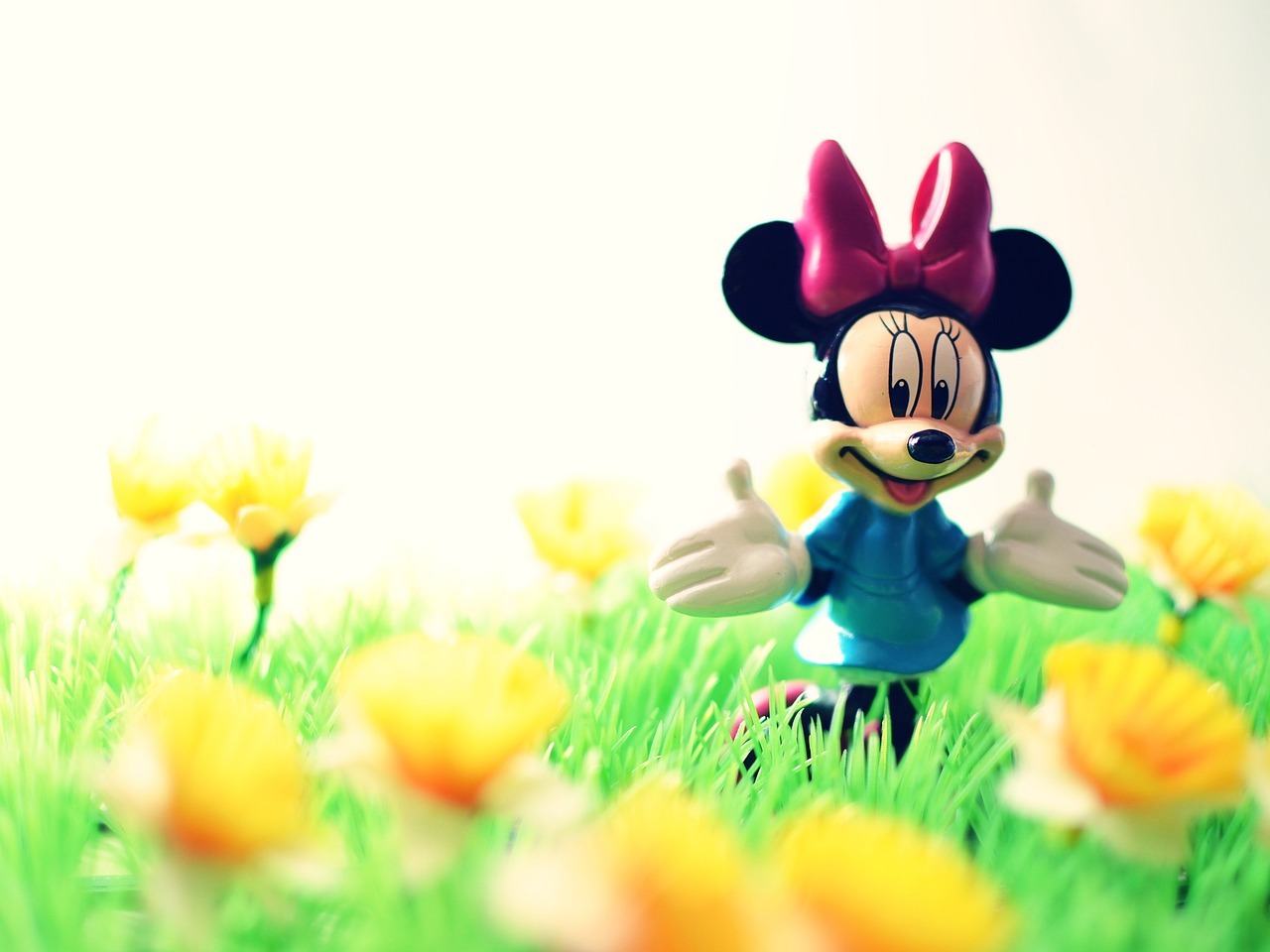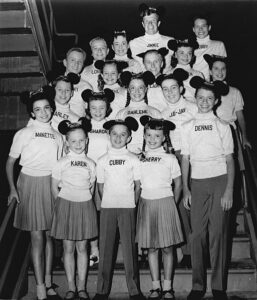The Mickey Mouse Club is a television variety show in America. It aired intermittently from 1955 to 1996 and returned to social media in 2017. The show was created by Walt Disney and produced by Walt Disney Productions. It was first televised for four seasons from 1955 to 1959 by ABC. The original run of the show featured a regular but ever-changing cast of mostly teen performers.
After its initial run from 1955 to 1959, it was revived three times. First was from 1977 to 1979 for the first-run syndication as “The New Mickey Mouse Club.” From 1989 to 1996, it was revived as “The All-New Mickey Mouse Club,” which aired exclusively on The Disney Channel on cable TV. In 2017, “Club Mickey Mouse” aired exclusively on internet social media but ended in 2018.
In every show, Mickey Mouse appeared not only in vintage cartoons originally made for theatrical release, but as well as in the opening, interstitial, and closing segments made exclusively for the show. Mickey was voiced by his maker Walt Disney in both the vintage cartoons and new animated segments. He previously voiced the character theatrically from 1928 to 1947 before being replaced by sound effects artist Jimmy MacDonald.
If you want to know more about the history of the Mickey Mouse Club, read on as we are going to tell you how it started and how it became a wildly popular show.
Before Becoming a TV Series
On January 11, 1930, the first official theater-based Mickey Mouse Club started at the Fox Dome Theater in Ocean Park, California. By March 31, there were 60 theaters that were hosting clubs. On April 15, 1930, the Club released its first issue of the Official Bulletin of the Mickey Mouse Club. The club had one million members by 1932. In 1933, the first British club opened at Darlington’s Arcade Cinema. However, in 1935, Disney began to phase out the club.
The 1955 to 1959 Show
Jimmie Dodd hosted the Mickey Mouse Club. He’s a songwriter and the Head Mouseketeer who provided leadership both on and off the screen. Aside from that, he also provided short segments that encouraged young viewers to make the right moral choices. These are little homilies that became popular as “Doddisms”.
A staff artist at Disney named Roy Williams also appeared in the show as the Big Mouseketeer. He’s the one who suggested that Mickey and Minnie Mouse’s ears should be worn by the cast members of the show. He helped in creating them, along with Bill Walsh, Chuck Keehne, and Hal Adelquist.
The main cast members of the show are called Mouseketeers. They did a variety of musical and dance numbers, and as well as a few informational segments. The most popular of the Mouseketeers created the so-called Red Team. They were kept under contract for the entire run of the show. The members of the team included Sharon Baird, Doreen Tracey, Lonnie Burr, Bobby Burgess, Karen Pendleton, Cubby O’Brien, Tommy Cole, and Annette Funicello.
The opening theme of the show was called “The Mickey Mouse March,” and it was written by the primary adult host of the shows, Jimmie Dodd. It was also repeated at the end of each episode with the slower “its-time-to-say-goodbye” verse. Later in the series, a shorter version of the opening title was used. Aside from that, Dodd also wrote many other songs that were used in individual segments throughout the series.
Show Themes and Scheduling
Each day had a special show theme for Mickey Mouse Club. These themes were reflected in several segments. On Mondays, the theme is fun with music day. On Tuesdays, it was guest star day. On Wednesdays, it was anything can happen day. Thursdays was circus day. And Fridays were talent round-up day.
In the 1955-1956 and 1956-1957 seasons, the series ran on ABC Television for an hour each weekday. In 1957-1958, it only ran for a half-hour on weekdays, which was the final season to feature new programming. Even though the show returned form the 1958-1959 season, these were only reruns from the first two seasons and were recut into a half-hour format.
The Cancellation of the Mickey Mouse Club
The show remained popular, but ABC still decided to cancel it after the end of its fourth season. It’s because ABC Network and Disney could not come to terms with its renewal. The show was canceled in September 1959, and its cancellation was attributed to several reasons. First was that Disney Studios did not explain high-profit margins from merchandise sales. The second reason was that the sponsors were uninterested in educational programming for children. And lastly, many commercials were needed to pay for the show.
After the Mickey Mouse Club was canceled, ABC also did not allow Disney to air the show on another network. With this, Walt Disney filed a charge against ABC and won the damages in a settlement. However, he had to come to an agreement that the Mickey Mouse Club and as well as Zorro, could not be shown on any major network.
After Walt Disney left ABC. Syndicated reruns began on September 3, 1962, with WNEW-TV (channel 5) in New York. Annette Funicello and the gang became popular all over again with a new audience. The Mickey Mouse Club reruns soon spread, and the rest is pop history.


